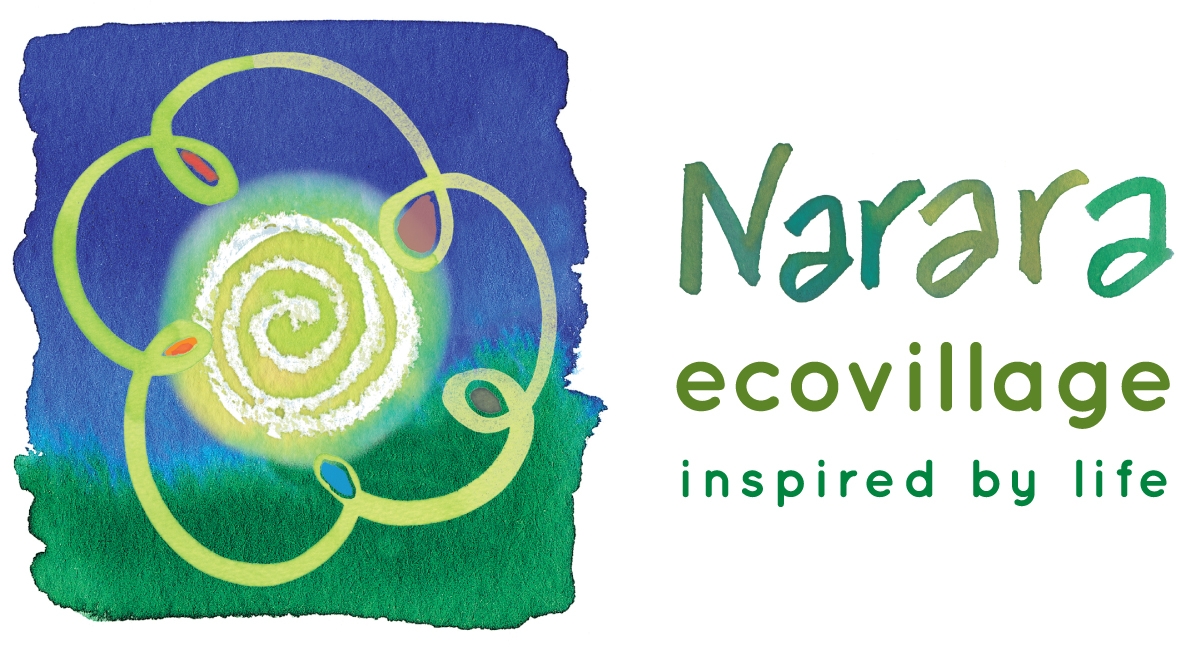- Dave Burrows
In a collaborative process lasting several months, members of Narara Ecovillage developed 6 objectives for 2030 in the areas of biodiversity, food growing, collaboration, regenerative business and carbon emissions.
The Plan has six objectives which the Ecovillage will seek to achieve by 2030. For each Objective, a Circle or Working Group has been designated to develop strategies, implement or encourage activities and measure progress towards the objectives’ targets.
You can find the full plan online here.
The objectives are:
- 1 That the Ecovillage increases biodiversity on its lands by 2% every 4 years, and by working with others, has a demonstrable impact on preservation and regeneration of biodiversity both locally and globally.
- 2 That by 2030 15,000kg of food is provided from the Ecovillage and our partners each year.
- 3 That the Ecovillage’s ratings improve for cultural indicators which reflect our Aim; and for individual members’ ratings for social capital: trust, collaboration, commitment and satisfaction.
- 4 That Narara Ecovillage households on average achieve a 75% reduction in net annual operational carbon emissions by 2030 when compared to the average for residences in Central Coast Council area in CY2020 (embodied carbon to be offset in 30 years of joining, as per our Community Management Statement).
- 5 That by 2030 the Ecovillage has a worldwide outreach for its work as a demonstration ecovillage, hosting 10,000 people at face to face events; 100,000 paid online interactions and reaching 1 million people through virtual and online means.
- 6 That by 2030 30% of the Ecovillage’s annual operating costs are derived from contributions by regenerative businesses owned by and/or based at the Ecovillage.
The Strategic Plan contains details of the strategies to be used to address each objective as well as the measurement methods to be used. Results from the first year of reporting against these objectives – the 2022/23 financial year – have now been received.
In future issues of Network News, we will look at the performance against the objective in the first year and plans for the second (current) year. The Strategic Plan will undergo a Mid Term Review in 2026.
Strategic plan development process 2021-22
Phase 1 (Sept-Oct 2021)
Input needed to be sought from all members about strategic priorities for the ecovillage.
To save time, it was proposed to seek the results of interviews carried out by village member Rafaele Joudry two years earlier: specifically the results of questions about who people joined the ecovillage and what they think it can or should achieve.
However, a separate process began in mid-2021 to re-examine the Aim of the Ecovillage. After initial results of these discussions were seen, it was realised that the themes emerging from the Aims discussions would be suitable for a first step in assembling inputs about strategic directions from the members.
At the same time that Aims discussions were being held, a message was sent out seeking volunteers to be involved in drafting the Strategic Plan. These volunteers became the drafting group and included three men and three women with both Stage 1 and Stage 2 members and a range of ages.
Phase 2 (November- December 2021)
All Aims discussion records were examined by all members of the drafting group to determine whether broad themes were present. There were natural groupings under the six broad headings of community, food, biodiversity, education, business and carbon reduction. Each member of the drafting group was then tasked with looking through all the Aims discussion records to find specific statements about strategies or activities under one of these headings.
After these were swapped with each other and commented on by the full group, each drafting group member (either alone or with others) developed a draft SMAART (specific, measurable, ambitious yet achievable, relevant, time-constrained) strategic objective, strategies and some examples of activities that could be carried out towards the strategic objective – these activities were drawn mostly from comments in the Aims discussions.
The draft objectives, strategies and sample activities were presented at a Members Meeting and publicised on Slack and the Wiki, seeking comments.
Phase 3 (January-March 2022)
The draft of objectives, strategies and activities was exhibited on the Wiki for this whole period, together with Slack reminders to comment. At the same time, members of the drafters group met with all relevant Circles to discuss refinements and modifications of strategic objectives and strategies.
Once all relevant circles and working groups had agreed on the objective and strategies related to their work, the full set of objectives and management arrangements – which circle or working ghroup would lead on work for each objective – was presented to and achieved consent at the Steering Circle.
Phase 4 (March – May 2022)
The full draft Strategic Plan together with measurement processes (where known) and management arrangements, but without sample activities, was placed on the Wiki with Slack messages inviting final comments. The draft plan was presented to the April Members Meeting and sent to the Board for adoption. In May, the Board adopted the Strategic Plan.
The draft Strategic Plan is being used by the Land Use Masterplan review group to ensure harmony of objectives. Annual action plans are being developed by the relevant circles and teams leading work towards each objective, to both enable us to measure progress towards strategic objectives and to provide greater detail for each year’s activities.

